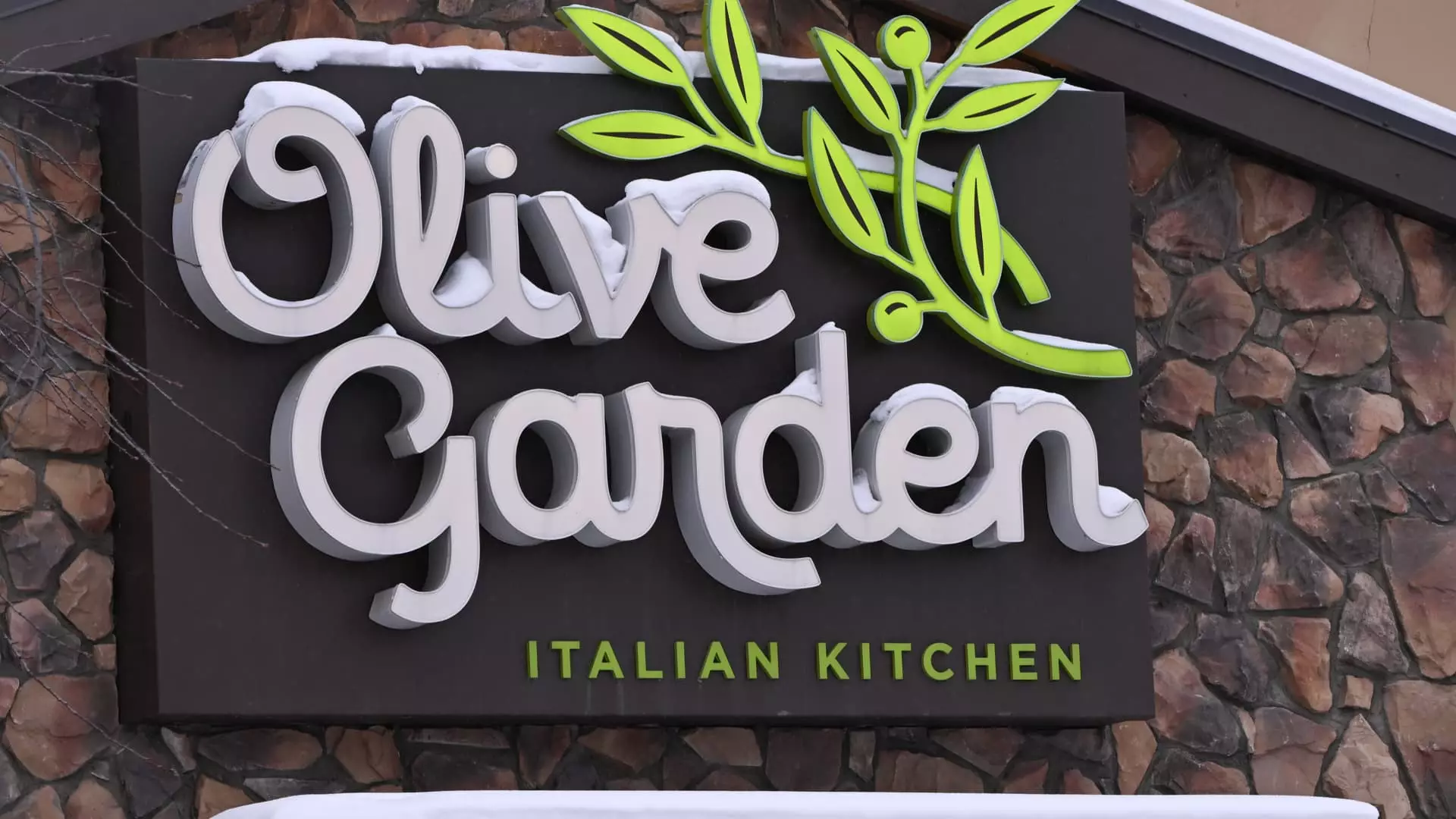Darden Restaurants, the parent company of beloved dining establishments like Olive Garden and LongHorn Steakhouse, has recently released a fiscal third-quarter report that has raised eyebrows across the financial landscape. Despite managing an adjusted earnings per share of $2.80, slightly exceeding Wall Street’s expectations of $2.79, the accompanying revenue figures tell a more troubling story. With total revenue landing at $3.16 billion—below the anticipated $3.21 billion—the company’s overall performance is marred by missed projections and a forthcoming net income decline.
The Chuy’s Acquisition: A Mixed Blessing
While the inclusion of Chuy’s restaurants has nominally bolstered Darden’s revenue by 6.2%, one cannot help but wonder if this acquisition has distracted from the core brands that initially put Darden on the map. Analysts’ expectations of same-store sales growth were crushed, with Darden reporting only a 0.7% increase versus the forecast of 1.7%. The much-loved family dining chain, Olive Garden, saw a mere 0.6% increase in same-store sales—falling short of a targeted 1.5%. LongHorn Steakhouse didn’t fare much better, achieving only a 2.6% rise instead of the projected 5%. These figures are particularly concerning given that these chains traditionally represent the bedrock of Darden’s business.
Fine-Dining’s Disastrous Decline
Adding insult to injury, Darden’s fine-dining segment—which encompasses elite brands like The Capital Grille and Ruth’s Chris Steak House—has reported a disheartening decline of 0.8% in same-store sales. For a company that prides itself on dining experience, these numbers go beyond mere low sales; they represent a growing disinterest from consumers who are opting for alternatives in an increasingly competitive landscape. What should be a shining crown jewel of the portfolio is instead tarnished and losing its luster.
The Broader Economic Context
The current economic climate poses challenges that seem to be bubbling under the surface of Darden’s operations. Rising inflation and shifting consumer behaviors have driven diners toward more affordable dining options while leading to intense competition among restaurants. As inflation rates continue to impact discretionary spending, Darden’s brands are grappling with a newfound reality that may necessitate a reevaluation of their market strategies.
Looking Ahead: A Cloudy Future
Darden’s outlook for the fiscal year remains cautiously optimistic, with guidance for revenue expected to hit $12.1 billion and adjusted earnings narrowed to a range of $9.45 to $9.52 per share. However, such numbers fail to inspire confidence in an era where performance is flagging and consumer bases are fickle. The fact that Chuy’s results won’t formally contribute to same-store metrics until the fiscal fourth quarter in 2026 further clouds any immediate outlook, casting a long shadow over Darden’s strategic direction.
Despite a history of success, Darden Restaurants finds itself at a precarious juncture. Stakeholders must consider whether these dismal indicators are merely temporary setbacks or if they foreshadow a deeper, more systemic issue that could undermine the brand’s credibility and financial stability over time.

